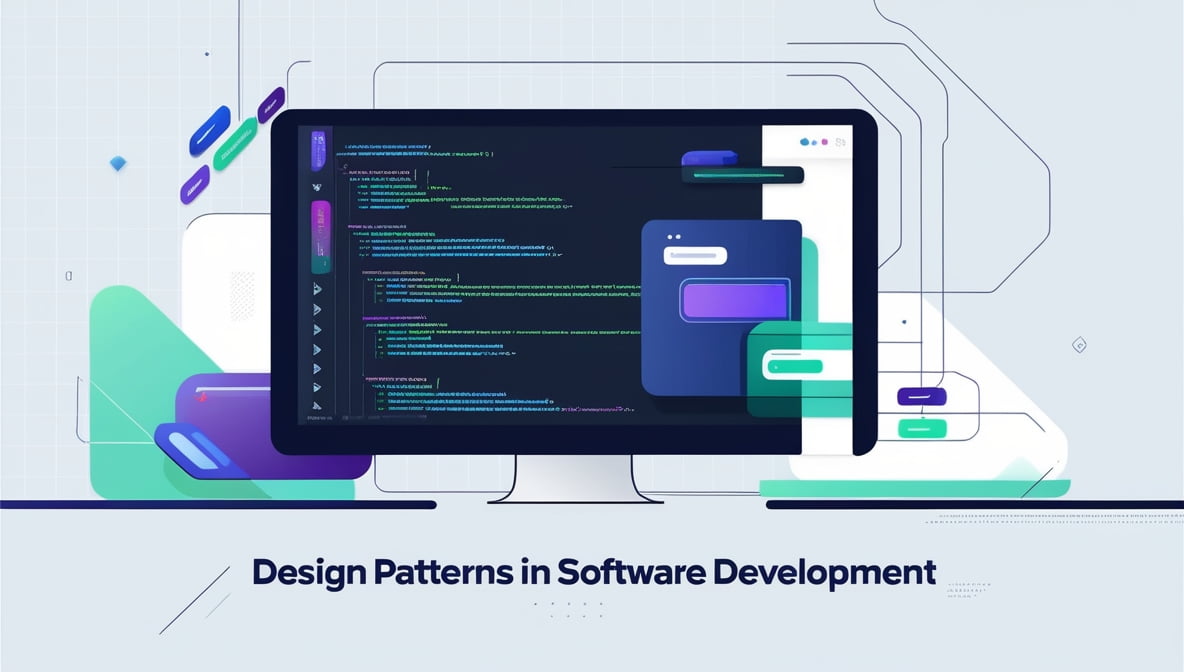Design patterns in software development are like tried-and-true recipes for solving common problems that developers encounter. They provide a structured way to approach coding challenges, making it easier to create maintainable and scalable software. If you’ve ever felt overwhelmed by the complexity of software design or wondered how to make your code more efficient, understanding design patterns can be a game changer.
What Are Design Patterns?
At their core, design patterns are reusable solutions to recurring design problems in software development. They aren’t specific pieces of code but rather templates that guide developers on how to structure their code in a way that addresses specific challenges. Think of them as blueprints for building software components, enabling developers to communicate more effectively and avoid reinventing the wheel.
Why Are Design Patterns Important?
You might be asking yourself, “Why should I learn about design patterns?” Here are a few compelling reasons:
- Efficiency: Design patterns can speed up the development process by providing proven solutions that reduce the time spent on problem-solving.
- Maintainability: Using design patterns can lead to cleaner, more organized code that is easier to maintain and understand.
- Collaboration: They create a common vocabulary among developers, making it easier to discuss and implement solutions within a team.
What Are the Types of Design Patterns?
Design patterns can be broadly categorized into three types: creational, structural, and behavioral. Each type addresses different aspects of software design.
Creational Patterns
Creational patterns focus on object creation mechanisms, aiming to create objects in a manner suitable to the situation. Here are a few key patterns:
- Singleton: Ensures a class has only one instance and provides a global point of access to it. Imagine a scenario where you have a configuration manager that should only be instantiated once throughout your application.
- Factory Method: Defines an interface for creating an object but lets subclasses alter the type of objects that will be created. This is useful when you want to delegate the instantiation process to subclasses.
- Builder: Separates the construction of a complex object from its representation. This pattern is handy when you want to create different representations of a product using the same construction process.
Structural Patterns
Structural patterns deal with object composition, helping to ensure that if one part of a system changes, the entire system doesn’t need to change. Some common structural patterns include:
- Adapter: Allows incompatible interfaces to work together. For instance, if you have a new payment system that needs to integrate with an existing application, an adapter can bridge the gap.
- Decorator: Adds new functionality to an existing object without altering its structure. This is like adding toppings to a pizza; the base remains the same, but you enhance its flavor.
- Facade: Provides a simplified interface to a complex subsystem. Think of a facade as a remote control for your TV; it simplifies the interaction with multiple components.
Behavioral Patterns
Behavioral patterns focus on communication between objects, defining how they interact and collaborate. Here are a few notable examples:
- Observer: A way to notify multiple objects about any changes in another object’s state. This is often used in event handling systems, where you want to update several parts of your application when a particular event occurs.
- Strategy: Defines a family of algorithms, encapsulates each one, and makes them interchangeable. This pattern is useful when you want to choose an algorithm at runtime.
- Command: Encapsulates a request as an object, thereby allowing for parameterization of clients with queues, requests, and operations. It’s like ordering food at a restaurant; you give the order (command) to the waiter (invoker), who then communicates with the chef (receiver).
How do I know which design pattern to use?
Choosing the right design pattern is like picking the right tool for a job. You wouldn’t use a hammer to tighten a screw, right? Similarly, different design patterns solve different problems.
Here’s a quick guide to help you choose:
- Identify the problem: What specific issue are you trying to solve?
- Understand the context: What are the constraints and requirements of your project?
- Research patterns: Look for patterns that address similar problems
- Evaluate trade-offs: Consider the pros and cons of each potential pattern
- Experiment: Try implementing the pattern in a small-scale prototype
Remember, it’s not about memorizing every pattern out there. It’s about understanding the concepts and knowing when to apply them.
Are Design Patterns the Solution for All My Coding Problems?
Whoa there, cowboy! While design patterns are incredibly useful, they’re not a magic solution to every problem. In fact, overusing or misusing them can lead to unnecessarily complicated code.
Here are some potential pitfalls to watch out for:
- Overengineering: Don’t use a complex pattern when a simple solution would suffice
- Pattern obsession: Don’t try to force every piece of code into a known pattern
- Ignoring context: A pattern that works well in one situation might be overkill in another
Remember, the goal is to write clean, maintainable code that solves the problem at hand. Sometimes that means using a design pattern, and sometimes it doesn’t.
How Do I Implement a Singleton Pattern?
Implementing a Singleton in a language like Python looks like this:
class Singleton:
_instance = None
def __new__(cls):
if cls._instance is None:
cls._instance = super(Singleton, cls).__new__(cls)
return cls._instanceThis ensures that no matter how many times you instantiate the class, there will only ever be one instance.
What Are Some Best Practices for Using Design Patterns?
- Understand the Problem: Don’t force a pattern where it doesn’t fit. Understand the problem first, then choose the right pattern.
- Keep It Simple: Complexity can kill. Start with simpler patterns and evolve as needed.
- Readability Over Cleverness: Write code that others (and future you) can understand. Patterns should enhance, not complicate.
Design patterns are powerful tools in a developer’s toolkit. They provide elegant solutions to common problems, improve code quality, and facilitate better communication among team members. By understanding when and how to use them effectively, you can take your software development skills to the next level. So go ahead, explore the world of design patterns, and watch your code transform from good to great!






